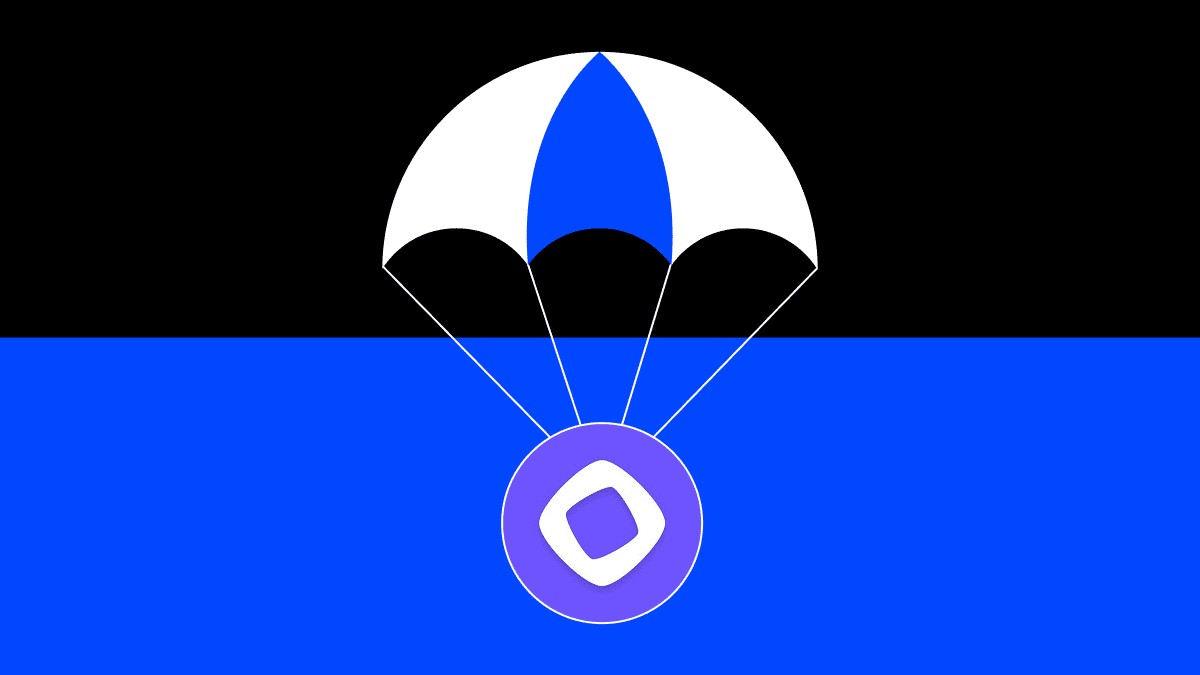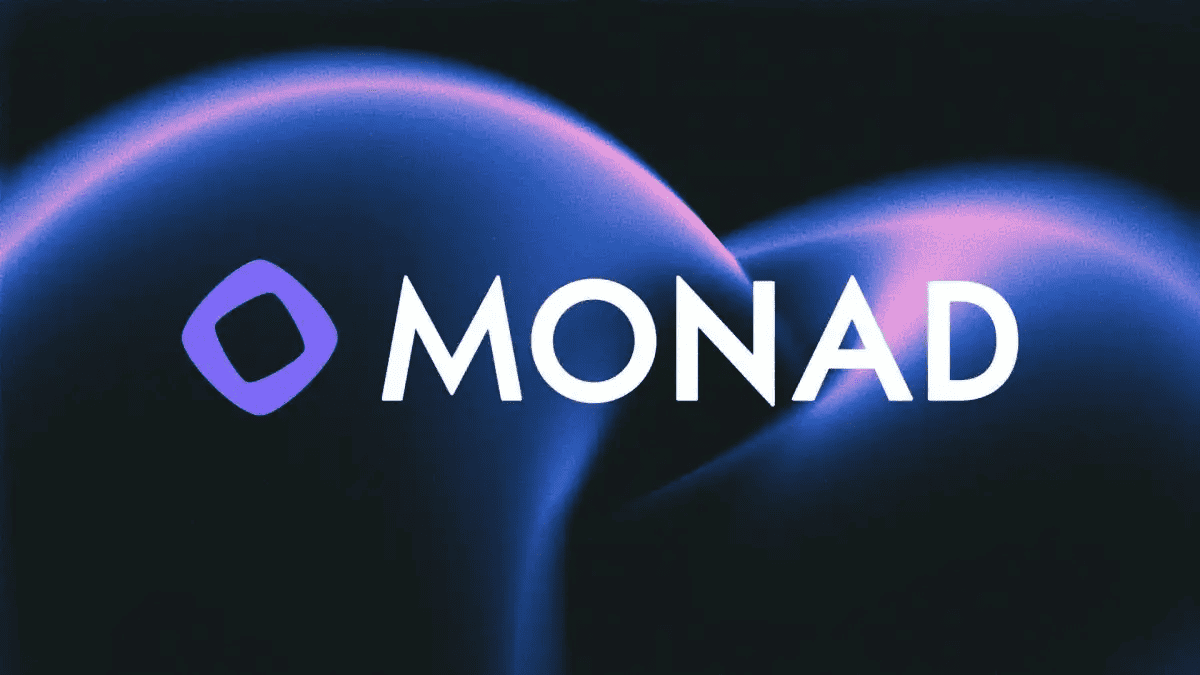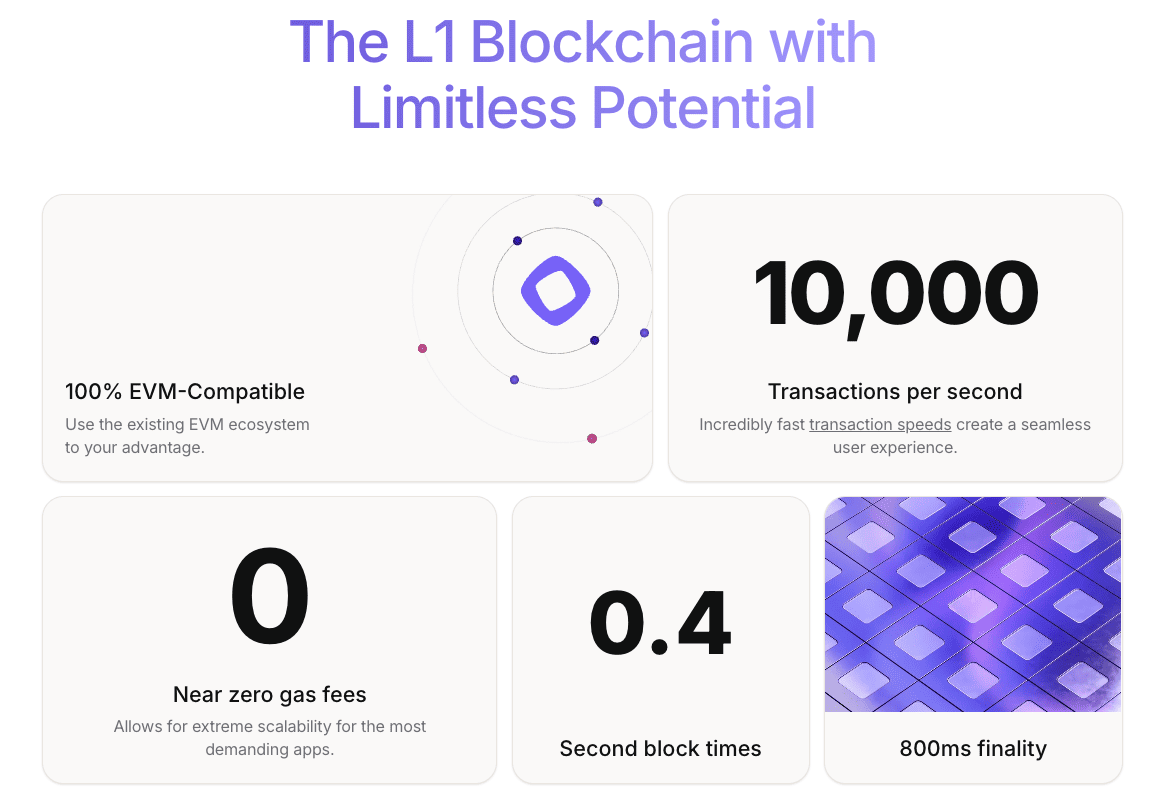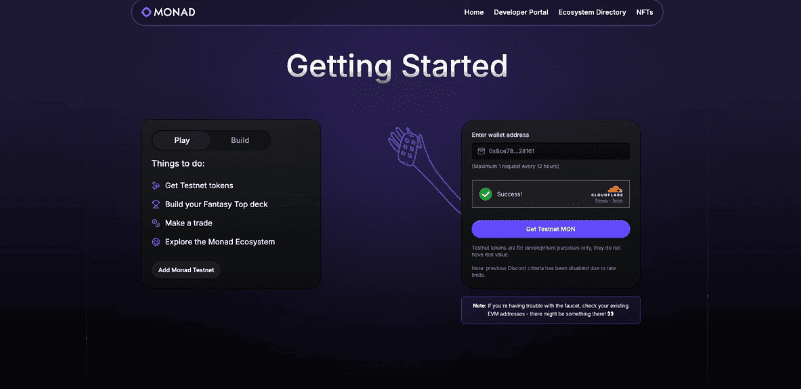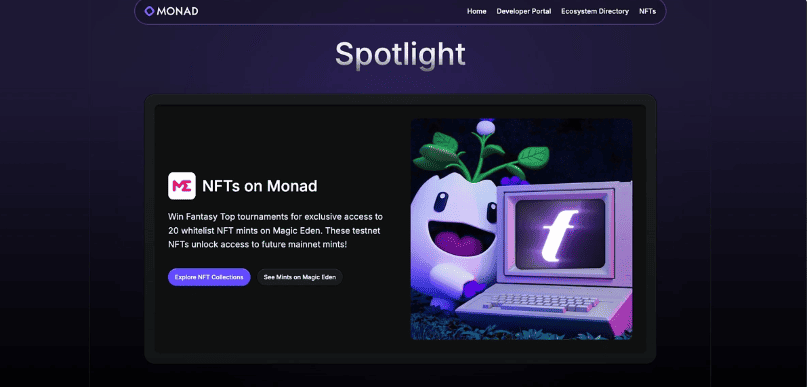On 14 October 2025, Monad will open the MON claims portal on its official site.
Monad (MON) is a high-performance, EVM-compatible Layer 1 targeting 10,000 TPS, 0.4-second block times, and near-zero fees through parallel execution and fast finality.
This guide explains Monad, outlines how the MON airdrop works, walks through the claim steps and key dates, and covers trading MON on BingX once it lists.
What Is Monad (MON) and How Does It Work?
Monad is built for apps that need speed without high costs. It keeps the familiar EVM setup, so developers can use the same tools and contracts they use on
Ethereum. For trading and market apps, the network handles lots of rapid updates without slowing order flow or settlements.
DeFi teams can run multi-step transactions and complex strategies while keeping fees low and execution steady, even when usage spikes.
Interactive apps are a fit too. Games can record moves and asset transfers on-chain without long waits. Social and real-time apps can post updates at a pace users expect. Because Monad stays bytecode-compatible with Ethereum, migrations are straightforward and wallets work out of the box.
Running a node does not require heavy hardware, which lets more people participate and helps decentralization as demand grows. Put together, speed, low cost, and EVM compatibility widen what builders can create while keeping the barrier to entry low.
Source: Monad
What Are Monad's Core Use Cases?
Monad targets workloads that need high speed and low fees without leaving the EVM stack. That includes high-frequency trading and complex DeFi flows with frequent state updates.
Gaming and real-time apps can settle actions on-chain without delays, and bytecode compatibility lets Ethereum apps and tools migrate with minimal changes. Modest hardware needs enable more validators, supporting decentralization as usage grows.
Source: Monad
What Is the MON Token Utility and Tokenomics?
• Fees: Expected native token for transaction fees and
smart contract execution; await official confirmation.
• Staking and security: Potential use for validator
staking to secure the network; mechanics and yields not disclosed.
• Governance: Possible token voting for protocol upgrades or treasury use; not yet confirmed.
• Community incentives: May fund usage, liquidity, and builder programs; details pending.
MON Tokenomics and Allocation
Until the paper is live, treat any claims about splits, cliffs, or vesting as unconfirmed and rely only on official channels.
What Is the Monad Airdrop and Who Is Eligible to Claim?
The
airdrop is Monad’s plan to distribute a portion of MON to users. The team has confirmed that the claims portal opens on October 14. That update settles the timeline but does not include eligibility rules, allocation amounts, vesting terms, or a mainnet date.
A representative also clarified that only the claims portal goes live on that day, not the airdrop itself or the network’s mainnet. There is no official list of qualifying actions, minimum activity thresholds, or a points framework. Many users are active on the testnet, but Monad has not confirmed whether such activity will count toward MON allocations. Until the team releases the rules, treat claims about weights, tiers, or snapshots as unverified.
How to Participate in Monad (MON) Airdrop
2. Use the faucet. On the homepage faucet, paste your wallet address to receive testnet MON.
3. Explore NFTs. In the Spotlight section, choose "See Mints on Magic Eden," connect your wallet, browse Monad testnet
NFTs, and purchase a testnet item.
4. Try Fantasy Top. From the Trending prompt, select Play Now, register, sign in with Google or X, authorize the app, open a pack, and save a deck.
5. Make a trade. Back on the testnet homepage, open the trading section, connect your wallet, pick an asset, enter an amount in MON, and confirm the transaction.
6. Keep exploring. Spotlight and Trending apps rotate. Spend time interacting with available
dApps to understand the platform’s flow and features.
How to Trade MON on BingX After Listing
When MON is listed, confirm deposit availability on BingX via official listings. After your claim settles, send a small test deposit first, verify the credit, then transfer the remainder. If the MON/USDT spot pair is offered, you can place limit or market orders according to your plan.
1. Deposit MON to BingX: If your airdropped tokens are in an external wallet, transfer them to your BingX account using the official MON deposit address.
2. Find the MON/USDT pair: On the BingX
spot page, type “MON” in the search bar and select MON/USDT.
3. Choose an order type
• Limit Order: Sets your own price and waits for a match, giving more control.
4. Manage risk with platform tools: Check order book depth and spreads, set price alerts, and consider partial fills to reduce slippage in thin markets.
5. Hold or trade: Keep MON on BingX if you plan to hold, or actively trade based on your strategy.
Pro tip: New listings can be volatile. Consider
dollar-cost averaging for entries and use limit orders to control execution prices.
Risks and Considerations
Eligibility is undefined. Testnet activity might not matter. Allocation splits, cliffs, and vesting are undisclosed, so you cannot gauge circulating supply or unlock cadence. October 14 refers only to the claims portal, not token distribution or mainnet, and timelines can shift.
Expect fake claim sites. Use verified links, check the domain and network, never share a seed phrase, and budget for gas. If MON lists on an exchange, confirm deposits are live, verify the ticker and contract, send a small test first, then use limit orders to handle thin books and volatility.
Related Reading
